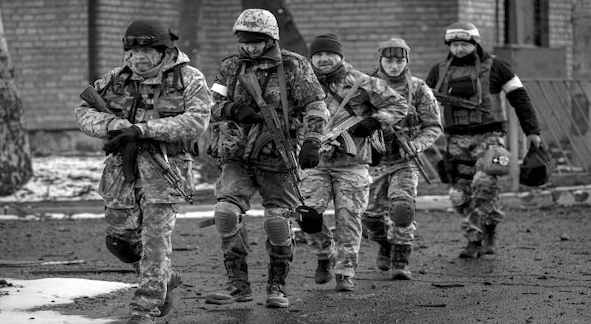Understanding Laws on Mercenaries in Conflict Zones (GS Paper 2, Governance)

Introduction
- In the realm of international humanitarian law (IHL), the distinction between conventional combatants and mercenaries is crucial.
- This distinction ensures compliance with humanitarian principles and addresses the unique challenges posed by mercenaries in conflict zones.
Definition of Mercenaries
Mercenaries are defined under Article 47 of Additional Protocol I to the Geneva Conventions, which outlines specific criteria:
- Recruitment for Armed Conflict: Mercenaries are recruited locally or abroad to participate in armed conflicts.
- Direct Participation in Hostilities: They actively engage in combat operations.
- Motivation by Personal Gain: Their primary motivation is financial compensation, often exceeding that of regular combatants.
- Non-Affiliation: They are not nationals or residents of the conflict parties, nor are they members of their armed forces.
- Absence of Official State Duty: Mercenaries are not sent by a state not involved in the conflict on official duty.
Legal Status and Treatment
- Under IHL, mercenaries, if captured, do not qualify as prisoners of war (POWs) and are not entitled to the protections afforded to POWs.
- However, they must be treated humanely according to fundamental guarantees of humanitarian law.
International Conventions and Regulations
- The International Convention against the Recruitment, Use, Financing and Training of Mercenaries (1989) is a key international instrument.
- It criminalizes the recruitment, use, financing, and training of mercenaries and encourages international cooperation in combating these activities.
Challenges and Limitations
- Ambiguity in Definition: There is often ambiguity and lack of consensus on what precisely constitutes a mercenary, complicating enforcement and prosecution.
- Domestic Legal Frameworks: Many countries do not have explicit domestic laws that criminalize mercenary activities, which hampers effective enforcement.
- Private Military and Security Companies (PMSCs): PMSCs pose challenges by providing military and security services for profit, blurring the lines between legitimate contractors and mercenaries.
Emerging Trends and Responses
- Regional Initiatives: Some regions, like Africa through the OAU Convention, have adopted specific conventions addressing mercenary activities tailored to regional contexts.
- Need for Comprehensive Frameworks: There is a growing need for clearer international norms and comprehensive legal frameworks to regulate PMSCs and modern mercenary activities effectively.
Way Forward
- Policy Implementation: Governments should implement robust policies to prevent human trafficking and distress migration associated with mercenary activities.
- International Cooperation: Strengthened international cooperation and adherence to existing conventions are crucial for effectively regulating and combating mercenary activities globally.
Conclusion
- Understanding and regulating mercenaries in conflict zones are critical for upholding humanitarian principles and ensuring global security.
- Clear legal definitions and enhanced international cooperation are essential in addressing the evolving challenges posed by modern military and security dynamics, including the activities of PMSCs.
- Efforts to strengthen legal frameworks and enforce regulations will contribute to mitigating the impact of mercenaries on international peace and security.


